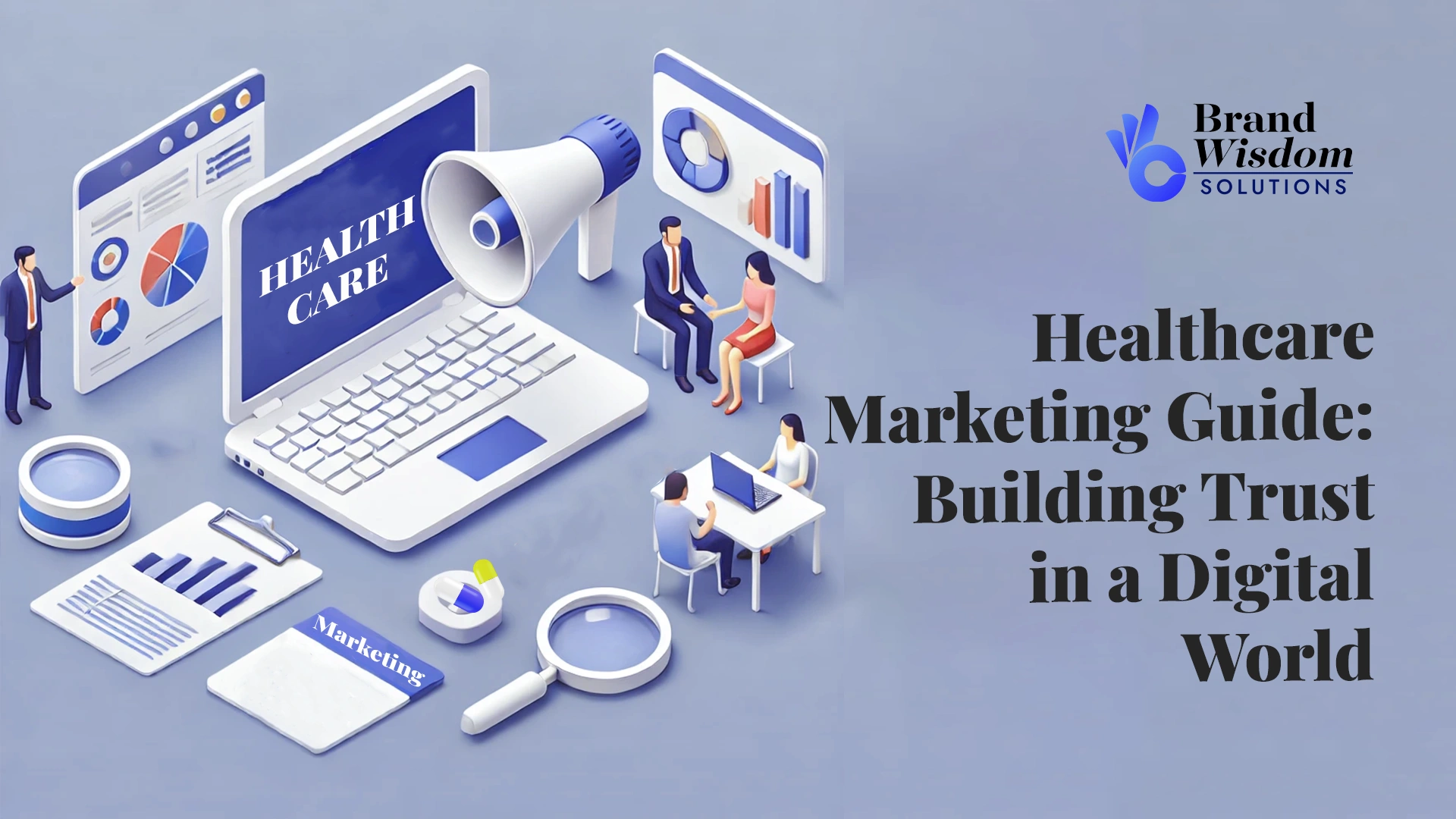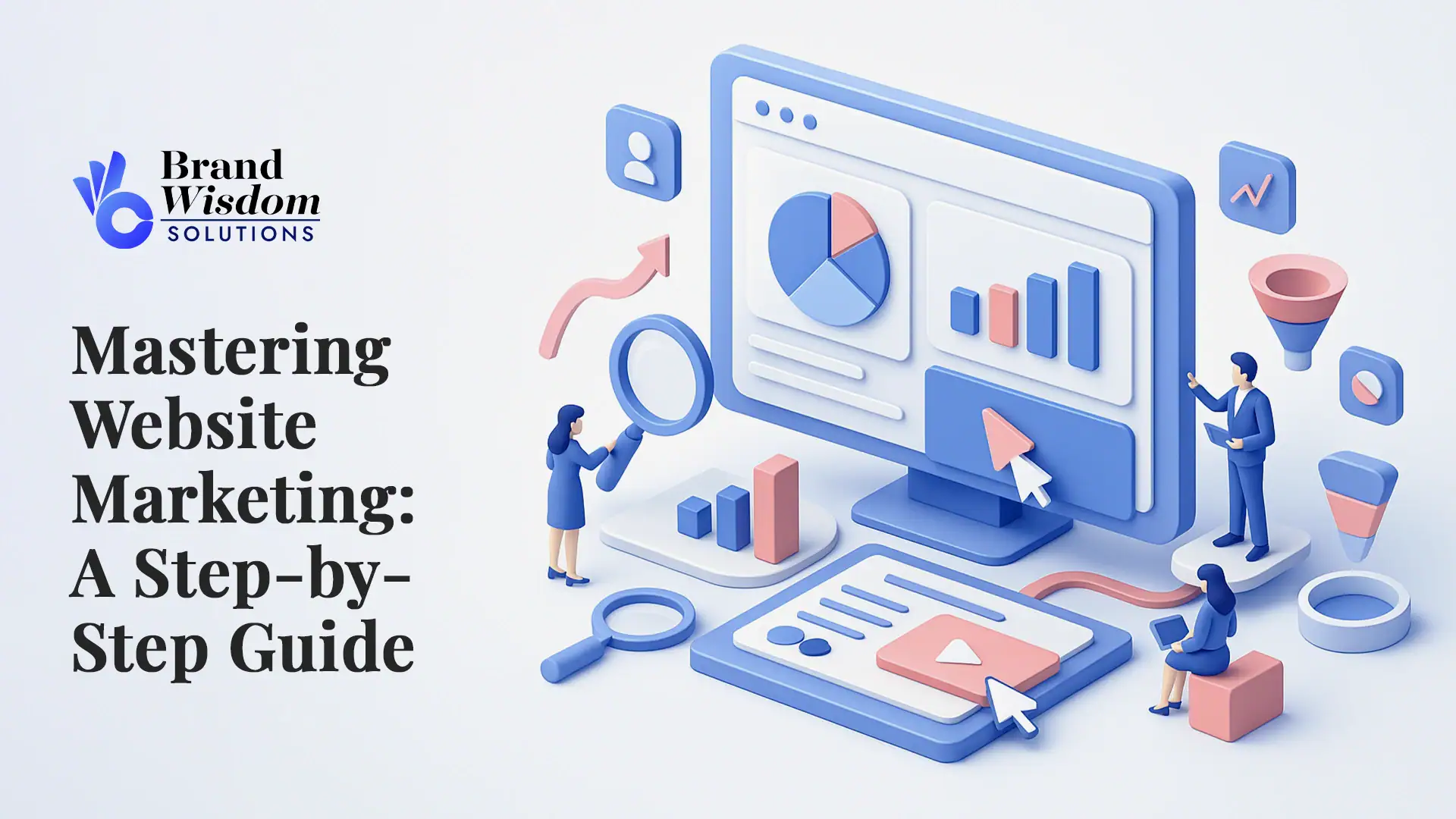Healthcare marketing has also evolved in the digital era, shifting away from conventional approaches to embracing data-based, patient-centered strategies. Nowadays, healthcare institutions are utilizing digital platforms such as telemedicine, personalized communication, and virtual care platforms to boost patient engagement and establish trust. Through customer insight and analytics, marketers can craft customized campaigns that resonate with unique patients, enhancing reach and performance.
To remain competitive, healthcare marketers are spending on solid online presences via SEO, social media, and compelling content. These not only enhance visibility but also contribute to long-term patient relationships. As consumer behavior changes and technology advances, it is important to remain up-to-date on trends and regulations. This guide offers the insights necessary to succeed in today’s rapidly changing healthcare marketing environment.
Understanding Healthcare Marketing in the Digital Age

The age of digital provides both new opportunities and challenges to healthcare professionals. Patients are better informed and networking online as never before. They participate in their own health choices and demand a better consumer experience. Due to this shift, it is critical to truly know how healthcare marketing is evolving in order to be successful.
Dependence on word-of-mouth and traditional ways of promotion is passé. Health organizations must navigate their way in an online world. The time is ripe for patients to seek information, analyze options, and converse with caregivers through cyberspace.
Defining Healthcare Marketing and Its Importance
Healthcare marketing is centered around communication and outreach to bring, engage, and retain patients within the healthcare system. It means understanding what consumers of healthcare require, developing precise messages, and communicating them using the most appropriate channels.
Effective healthcare marketing campaigns are essential for several reasons. For one, they generate patient acquisition by attracting new individuals to your practice or facility. They also encourage patient engagement, which can enhance satisfaction and loyalty.
Evolution of Healthcare Marketing with Technology
The evolution of technology has revolutionized the way healthcare advertising and healthcare marketing is done. It has enhanced how organizations communicate with patients. Digital platforms are now powerful tools through which one can make targeted outreach, customized messages, and data-driven decisions.
With increased mobile phones, social media, and internet resources, patients are easily able to obtain healthcare information. They can even study providers and treatment options extensively.
As technology continues to advance, healthcare marketers must be able to change. They must leverage new technology platforms in order to remain competitive and reach their target markets successfully.
Strategic Planning for Healthcare Marketing

Effective healthcare marketing in the healthcare industry requires a good strategic plan. It is a guideline to address the challenges of online marketing and achieve certain goals. When healthcare organizations take time for strategic planning, they can enhance their efforts and have improved results.
Formulating a strong strategic plan involves a few important steps. They are conducting a complete market analysis, determining your target market, and establishing definite and quantifiable goals.
Conducting a Market Analysis
Prior to launching marketing campaigns, perform a market analysis to determine the gaps in your services. Gather data on your market, competition, and prospective patients. Know your competitors’ strengths, weaknesses, target market, and marketing strategies to differentiate yourself. Be aware of industry trends, regulations, and changes in technology to realign and capitalize.
Identifying Your Target Audience
Identifying your target audience is very essential in healthcare marketing. Recognizing who your target patients are enables you to have effective campaigns that target them more effectively.
Consider the demographics of your target patients. This encompasses information such as age, gender, location, and insurance status. Also, think about their psychographics. Consider their lifestyle, values, and health issues. Once you know what motivates your audience and what they are struggling with, you can craft messages that appeal to them.
Developing Patient Personas
Patient personas are fictional representations of your perfect patients. They are derived from real data and studies. These personas enable you to know what your target market requires, what motivates them, and how they act.
When creating patient personas, list their demographics, medical history, lifestyle, and goals. Additionally, discuss the way they prefer to communicate, where they acquire information, and what drives them to make decisions.
By transforming your target audience into actionable and specific personas, you can customize your healthcare journey, messaging, and content. This will enable you to communicate more effectively and enhance the patient experience.
Building Trust and Credibility Online

In this world with too much information, trust and credibility matter significantly to healthcare organizations. The patients seek care from providers who demonstrate knowledge, compassion, and a genuine commitment to their well-being.
To earn trust online, healthcare marketers must prioritize being transparent, authentic, and patient-centered in their communications and interactions.
Importance of Patient Reviews and Testimonials
Online reviews are a key factor in making healthcare decisions in the modern age of technology. Potential patients usually read reviews and testimonials from other people. They use this information to know about the quality of care and satisfaction of patients at a particular healthcare provider or facility.
You must encourage your satisfied patients to leave their positive experiences in the form of online reviews. They can use websites such as Google My Business, Yelp, and healthcare review sites designed specifically for that purpose. These testimonials serve as social proof. They assist in establishing trust and credibility for your organization.
To get even more value from patient reviews, post them prominently on your website and social media. Consider dedicating specific sections to testimonials or including them in blog entries and other forms of content.
Case Studies as a Tool for Building Trust
Case studies are an excellent means of demonstrating what your healthcare organization can do. They provide a means of sharing your successes in a manner that is relatable. By presenting true stories about how you have enriched people’s lives, you provide compelling evidence of your abilities.
In writing case studies, emphasize the issues the patient faced, the solutions your team discovered, and the good outcomes resulting from it. Use clear language that emphasizes the human experience of the story.
Publishing your case studies on your website, blog, and social media can establish your credibility. It will bring in potential patients who desire similar services. These tales not only demonstrate your expertise but also assist you in establishing trust by demonstrating your commitment to patient care and successful outcomes.
Transparency in Pricing and Procedures
Transparency in healthcare costs and processes is extremely critical. It aids in building trust with the patient and in building long-term relationships. Patients nowadays are more concerned with costs. They appreciate having transparent and explicit information regarding what their care will cost.
You should post information in detail on your website. This includes your fee structure, the insurance programs you accept, and billing information. Give tools and resources so patients can estimate fees and search for financing possibilities.
Being transparent about your fees demonstrates that you respect transparency. It also enables patients to make better decisions. By being open about financial issues, you establish trust and minimize stress. This will result in an improved overall patient experience.
Leveraging Digital Platforms for Enhanced Engagement

Online sites offer health care organizations great opportunities to connect with patients throughout their health care process. They are able to share helpful content and allow easy communication. This makes such platforms very important for driving engagement.
Healthcare marketers can create a solid online presence by determining the specific strengths of each site and matching their efforts to the potential of that medium.
Optimizing Your Website for User Experience
Your website is the first impression people will have when they look for your health organization. That’s why it is so important to do website optimization in order to create a good user experience. A good and accessible site can do a great job of involving patients and making more people use your services.
Make sure your site works on mobile phones, looks good, and is easy to use. Use plain language, have clear designs, and have a reasonable search function. Prioritize making your pages load quickly so that users won’t leave your site.
Use search engine optimization (SEO) strategies, like display ads, to assist in making your site more visible in search results. Do some keyword research to find out what words potential patients are using when they search for medical services like yours.
Effective Use of Social Media in Healthcare
Social media marketing is critical for healthcare organizations looking to engage with patients and establish strong online relationships. Social media reaches a large population and provides opportunities to enhance brand awareness, disseminate useful content, and build a community.
Create interesting and valuable video content for every platform. Share blog posts, articles, videos, infographics, and other resources that educate and empower your audience. Encourage people to engage by asking questions, conducting polls, and responding to comments promptly.
Choose platforms on which your target audience is most active. Tailor your content to their likes. Maintain a consistent brand image and posting schedule to enhance visibility and engagement.
Email Marketing Strategies for Patient Retention
Email marketing is an excellent method to have patients return. By segmenting your audience into smaller segments and sending targeted messages, such as a follow-up call, you can establish positive relationships. This also assists in sharing valuable information and keeps patients engaged with your practice.
Make sure to organize your email list by patient details, past health records, or hobbies. Tailor your emails to meet personal needs and likes. Offer helpful content like health advice, reminders for appointments, and news about new services.
Select a good email marketing software to track things such as how many individuals open your emails, click on links, and purchase services. Review this data to make your content and how you send it better. This will assist in making your emails interesting and relevant to your audience.
Multichannel Marketing Approaches

In the media fragmented world today, employing a multichannel marketing strategy is highly essential. Through the integration of offline and online marketing, healthcare providers are able to construct a successful multichannel marketing strategy.
It’s important to keep it all consistent. This entails that your branding, message, and patient experience be consistent across all channels. A clear strategy ensures that people identify your brand and solidifies your message.
Integrating Offline and Online Marketing Strategies
In order to reach more individuals and achieve greater engagement, healthcare organizations must integrate their offline and online marketing strategies. By bridging the physical and digital worlds, healthcare marketers can deliver a more seamless and effective patient experience.
Employ old-fashioned marketing techniques such as print advertisements, direct mail, and community activities to generate traffic on your web sites. Include QR codes, unique landing pages, and social media mentions on your offline communications. This provides an easy way for individuals to connect with you on the internet.
Monitor the outcome of your combined campaigns. This will enable you to identify which channels best suit acquiring traffic, leads, and conversions. Use the data to enhance your plans and manage resources effectively.
The Role of Telehealth in Modern Healthcare Marketing
Telehealth growth altered how healthcare has been marketed presently. With growing utilization of digital health services among more individuals, healthcare providers ought to alter marketing strategies. Healthcare providers should bring attention to how telehealth benefits people in being accessible and convenient. They must also emphasize those in their webpages and advertisements.
Producing informative content, like blog posts, videos, and FAQs, can provide solutions to some questions that patients may have. Conveying the experiences of satisfied telehealth users can help establish trust and trigger more individuals to experiment with it.
Telehealth must be integrated into the whole patient experience, including effective patient scheduling. This involves ensuring that each step, from appointment booking to consultation, is convenient and enjoyable. By promoting and integrating telehealth effectively, healthcare organizations can enhance patient satisfaction and enhance access to care.
Using Content Marketing to Educate and Inform
Content marketing is crucial in healthcare marketing because of the significance of marketing. It provides useful healthcare information to patients and assists in establishing trust. The aim is to educate and engage your audience rather than merely selling your services.
You need to produce good-quality content that resolves the queries and concerns of your intended audience. Providing knowledge, tips, and helpful information will enable patients to make informed decisions regarding their health.
Post your content across various channels such as your website, blog, social media, and email marketing. By continually offering valuable and relevant content, particularly through your call center, you demonstrate that your organization is a source of information to be trusted. This can help establish long-term relationships with patients.
Measuring Success in Healthcare Marketing

In today’s evolving world of healthcare marketing, success must be measured. This is to enhance strategies and achieve objectives. By monitoring key metrics and viewing data, healthcare marketers can understand how their campaigns are performing.
It’s important to have well-defined key performance indicators (KPIs) that align with your marketing objectives. If you monitor these KPIs regularly and examine them, you can find out what is performing well and what needs improvement.
Key Performance Indicators (KPIs) for Healthcare Marketing
Tracking key performance indicators (KPIs) is extremely crucial in knowing how healthcare marketing efforts are performing. Metrics such as patient acquisition costs, patient retention percentages, online reputation, and return on investment (ROI) are critical to viewing marketing performance. By monitoring website traffic, conversion rates, and social media, healthcare marketers can obtain valuable information about how they engage and reach their target market. These KPIs are analyzed by them to make their campaigns better, utilize resources efficiently, and increase their digital marketing. It is important to take the time to learn and apply these KPIs in order to succeed with healthcare marketing.
Tools and Techniques for Marketing Analytics
Several tools and methods are at the disposal of healthcare marketers to analyze clinical data and extract actionable insights from their marketing efforts.
Take advantage of web analytics tools such as Google Analytics to monitor website traffic, user activity, and conversion. Use social media analytics dashboards to monitor engagement, reach, and audience demographics. Use CRM systems to store patient information, monitor interactions, and tailor communications.
| Tool | Description |
| Google Analytics | Tracks website traffic, user behavior, and conversions. |
| CRM System | Manages patient data, tracks interactions, and personalizes communications. |
| Social Media Analytics | Monitors social media performance and demographics |
| Survey Tools | Collect feedback from patients to gauge satisfaction. |
| Call Tracking | Analyzes call volume and lead sources. |
Conclusion
In the ever-evolving digital marketing era, healthcare is a vital component of trust and credibility establishment among existing patients. Through an understanding of what is required by patients and utilization of various platforms, better connectivity can be achieved among healthcare providers. Patient feedback, case histories, and transparent pricing information establish trust. Further, making it convenient for the website, utilizing social media correctly, and emailing for retaining existing patients are key strategies. With a combination of online and offline strategies, and telehealth services, success is paramount. Content marketing serves to educate and inform, contributing to a robust marketing strategy. Monitoring progress through KPIs and analytics guarantees that healthcare marketing continues to improve. Be well-informed, connect effectively, and form long-lasting relationships with patients in today’s digital world.
Frequently Asked Questions
What are the best practices for maintaining patient privacy online?
Patient privacy on the internet is extremely crucial. HIPAA compliance should be prioritized by healthcare providers. They must have good online security systems and educate their employees on how to handle sensitive healthcare information and health data effectively.
How can healthcare providers use social media effectively without violating HIPAA guidelines?
Healthcare professionals can utilize social media effectively without deviating from HIPAA compliance. They should not post identifiable patient information. Sharing testimonials should be done only after obtaining consent. They can also emphasize general health information in their online communication strategies.





